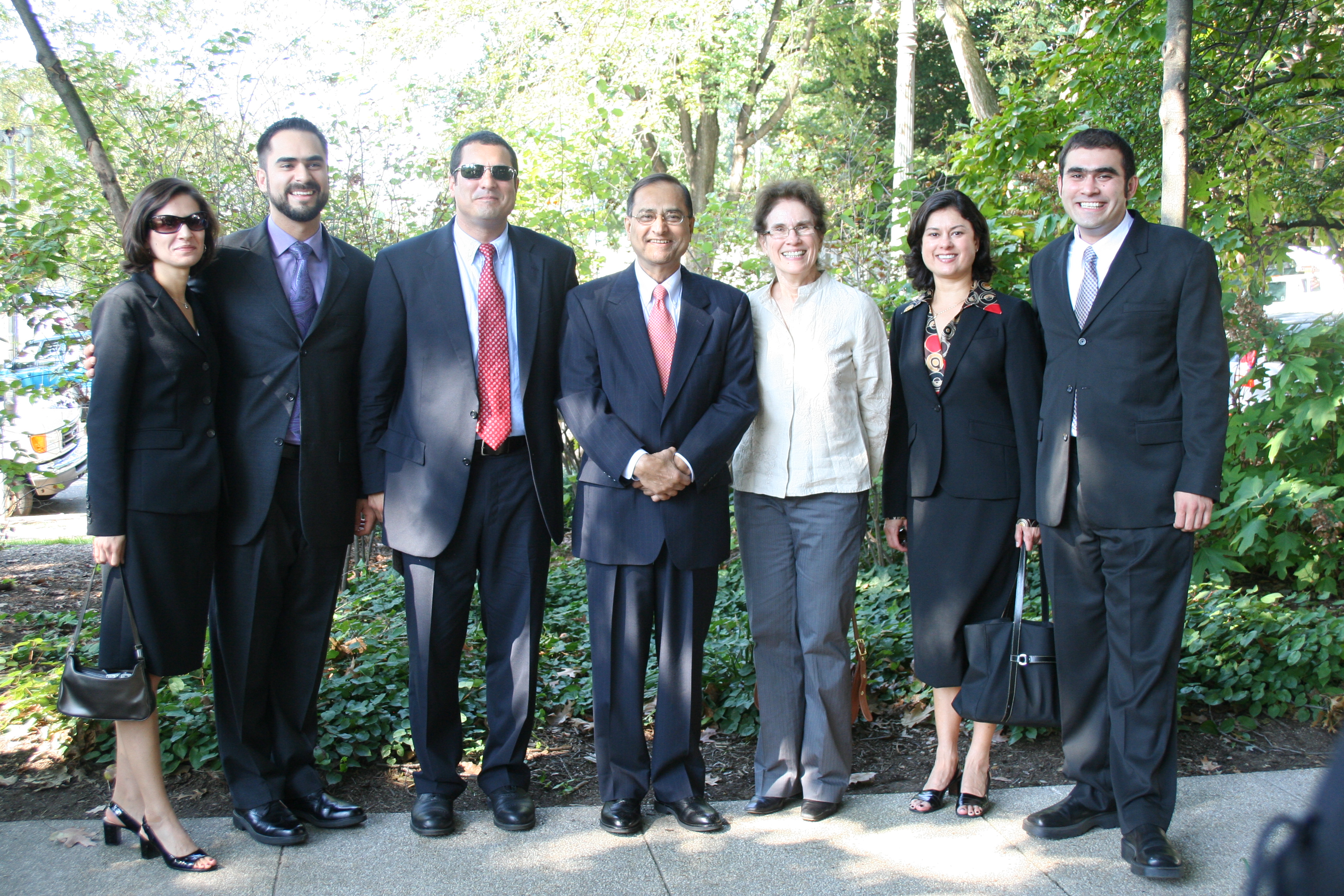UConn Alum Kumares Sinha Gives Back
Dr. Kumares Sinha started his long career in Transportation Engineering at UConn, where he received his M.S. and Ph.D. degrees in 1966 and 1968, respectively. After teaching for six years at Marquette University, he joined the faculty at Purdue University, where he has been the Edgar B. and Hedwig M. Olson Distinguished Professor of Civil Engineering since 1996. His research has significantly influenced pavement, bridge, and safety management systems, with notable involvements in AASHTO and the U.S. Army Corps of Engineers. An advocate for advanced technologies in transportation, Dr. Sinha has been involved in pioneering research on autonomous and connected vehicles. His contributions to the field are recognized globally, as evidenced by his role in editorial boards, leadership positions in various transportation organizations, and numerous prestigious awards, including election to the National Academy of Engineering. Dr. Sinha's career embodies a commitment to advancing transportation infrastructure and education on a global scale.
He now gives back to his alma mater with a gift to support graduate fellowships in Transportation Engineering, providing students like him sixty years ago with the opportunity to advance and excel in their studies. Dr. Sinha spoke to Dr. Chrysochoou about his UConn experience, career and his advice for current and future graduate students.
Conversation Transcript
Dr. Chrysochoou:Thank you once again for your generous gift and for taking the time to chat with me today. To start, could you tell me a bit about your journey into engineering and what led you to pursue a Ph.D. in transportation engineering?
Dr. Sinha: Of course. I've been the Edwin B. and Hedwig M. Olson Distinguished Professor of Civil Engineering at Purdue since 1996, having joined the university in 1974. Prior to that, I was at Marquette University for six years, where I was promoted to Associate Professor with tenure in 1972. My academic journey in the US started at UConn in 1964 where I completed my master's and Ph.D. in 1968. After obtaining my undergraduate degree in India in 1961 I worked for three years in Calcutta. My work there in road construction and settlement planning for refugee rehabilitation spurred my interest in transportation engineering, a field that was not well developed at that time, particularly in planning and operations.
Dr. Chrysochoou: It's intriguing to hear about the evolution of transportation engineering. How have you seen civil engineering change over the years?
Dr. Sinha: The field has indeed evolved significantly. Civil engineering started with a focus on mechanics, structures, and materials and expanded to include sanitation, water management, and later, transportation and construction using operational research, statistics, simulation, and optimization. These changes reflect the field's broadening scope while still maintaining its core focus on building and planning.
Dr. Chrysochoou: Reflecting on your time at UConn, how do you perceive the differences in the student body and academic environment from then to now?
Dr. Sinha: There's a notable difference. During my time, the student population was primarily domestic with a few international students from Asia. Now, there's a diverse international presence, especially in graduate programs.
Dr. Chrysochoou: What advice would you offer to a Ph.D. student just beginning their academic journey?
Dr. Sinha: I emphasize the importance of maintaining curiosity and exploring seemingly impossible ideas. This mindset has served my students well, propelling them into successful careers across various sectors.
Dr. Chrysochoou: Your generous contribution to the graduate students in transportation is deeply appreciated. What inspired you to make this gift?
Dr. Sinha: My experience at UConn played a pivotal role in my life and career. When I arrived from India, I had limited means, but the university, especially individuals like Professors Jack Stephens and Vincent Gant, provided immense support. Most significantly, UConn is where I met my wife. We were married for over 48 years when she passed away in 2015. Our life together, along with our five children, is a testament to the foundation we built at UConn. This gift to support students is a small token of my gratitude. The care and support I received at UConn, however, can never be repaid.
Dr. Chrysochoou: Your journey and your contribution are truly inspiring. We're grateful for your support and for sharing your story with us today.
Dr. Sinha: It's my pleasure to have the opportunity to share and give back. Thank you for this engaging conversation, and I look forward to future interactions.
Dr. Chrysochoou: Thank you, Dr. Sinha. Your story is a beacon for our community, and we cherish your ongoing connection with us.







